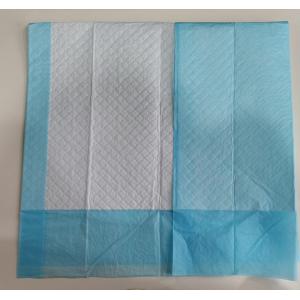
Add to Cart
Linen savers, also known as bed pads or underpads, are protective sheets placed on top of bedding or mattresses to absorb and protect against spills, leaks, or accidents. They are commonly used in healthcare settings, such as hospitals, nursing homes, or home care, to maintain cleanliness and protect the underlying surfaces.
Absorbency: Linen savers are designed to absorb liquids effectively, such as urine, blood, or other bodily fluids. They have multiple layers, including a soft top layer, an absorbent core, and a waterproof backing to prevent leakage.
Size and Shape: Linen savers come in various sizes and shapes to accommodate different bed sizes and user needs. They can be rectangular, square, or contoured to fit the shape of the bed or specific areas, like the mattress or chair.
Disposable or Reusable: Linen savers are available in both disposable and reusable options. Disposable pads are made of absorbent materials and are discarded after use, while reusable pads are typically made of washable materials and can be laundered for multiple uses.
Soft and Comfortable: The top layer of linen savers is often made of a soft, non-irritating material, such as cotton or flannel, to provide comfort to the user. This layer is in direct contact with the skin and helps wick away moisture for a drier surface.
Odor Control: Some linen savers have additional features, such as odor control properties or antimicrobial treatments, to help manage unpleasant odors and maintain a more hygienic environment.
Linen savers are essential for maintaining hygiene and protecting bedding and mattresses from damage or contamination. They provide a convenient and cost-effective solution for managing spills or accidents, particularly in healthcare and caregiving settings.


The frequency of changing linen savers depends on various factors, including the individual's needs, the level of absorbency of the pad, and the specific situation. Here are some general guidelines:
Regular Schedule: In healthcare settings, it is common to change linen savers on a regular schedule, such as every few hours or during routine patient care. This helps maintain cleanliness and prevent the buildup of moisture or odors.
Individual Needs: The frequency of changing linen savers may vary based on the individual's condition and level of incontinence. Those with more frequent or heavy accidents may require more frequent changes to ensure comfort and hygiene.
Absorbency Level: Consider the absorbency level of the linen savers. If the pad becomes saturated quickly and is unable to effectively absorb more liquid, it should be changed promptly to maintain proper protection and hygiene.
Spills or Accidents: Linen savers should be changed immediately after any spills, leaks, or accidents to prevent contamination and maintain a clean environment.
Caregiver Observation: Caregivers or healthcare professionals should monitor the condition of the linen savers and change them as needed. They should assess the pad's saturation level, odor, and overall cleanliness to determine when a change is necessary.
It's important to note that the specific recommendations for changing linen savers may vary based on individual circumstances, such as the person's health condition, mobility limitations, and personal preferences. Consulting with healthcare professionals or following the guidelines provided by the healthcare facility or caregiver can help determine the most appropriate schedule for changing linen savers.